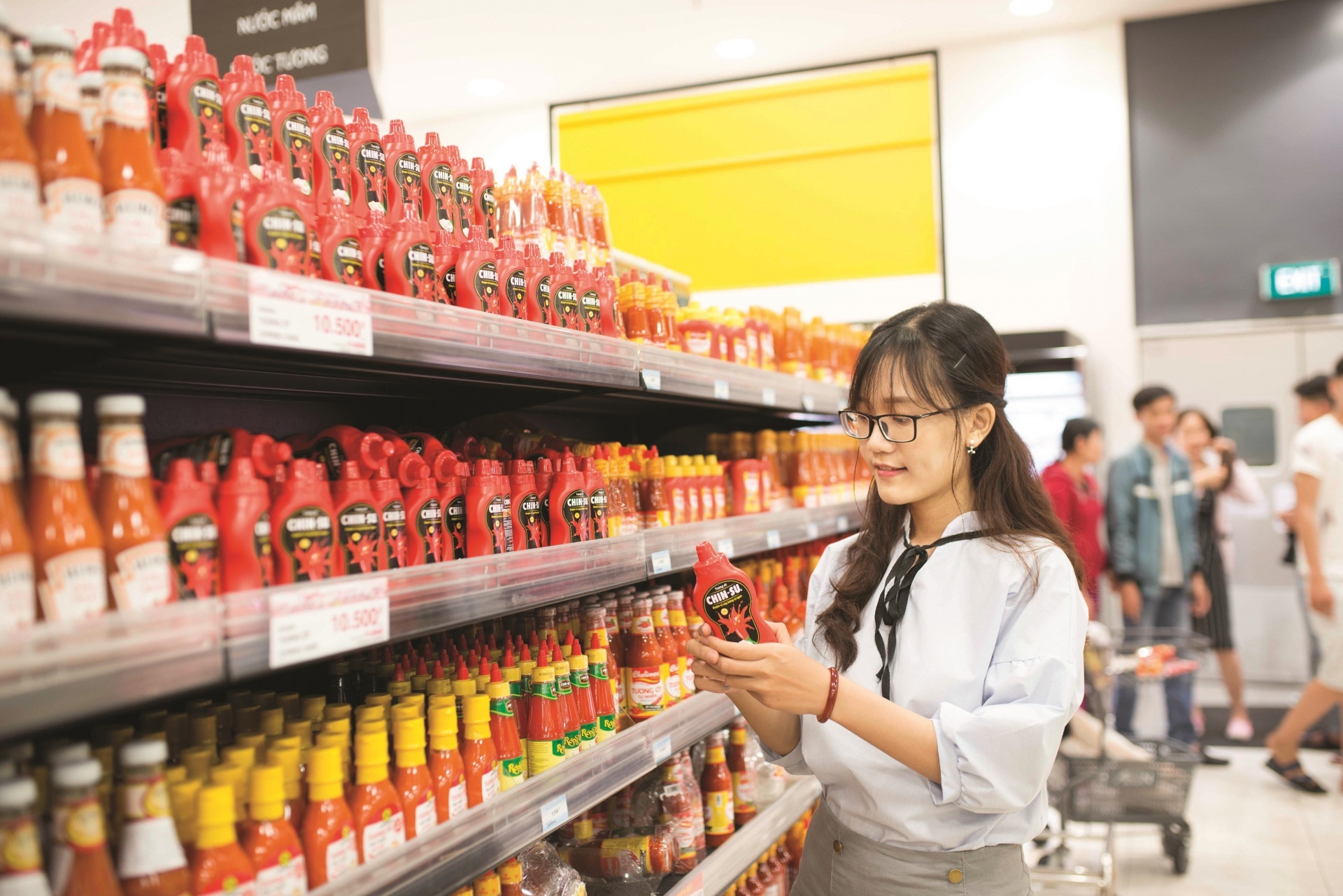FMCG groups focus on trends to expand activities
Peter Christou, general manager of Vietnam Worldpanel Division at Kantar, told VIR, “The market will face some bumps in the first half of 2023 as the global economy is expected to continue to experience a slowdown and inflation in Vietnam is expected to rise but in manageable levels. We also see some encouraging signs, such as a growing consumer class, rising domestic demand, a recovery in inbound tourism, and a 20 per cent increase in basic wages by the second half of the year.”
 |
| FMCG groups focus on trends to expand activities, photo Masan |
Christou noted that it is important for fast-moving consumer goods (FMCG) brands and manufacturers to understand how their consumers and categories react differently to increasing prices and choose the right strategy mix to retain customers while prices are still rising.
“Some of the major trends we will see in the future include the rise of social commerce and youngsters born after Generation Z becoming decision makers in FMCG purchases,” Christou added. “Brands must be available on the right channel and delivering the appropriate message to capture this segment. Companies should also keep in mind that consumers will have a higher demand for personalisation, stronger and faster innovation, and a rising expectation for transparency and social responsibility.”
Pua Wee Meng, consumer industry leader of Deloitte Southeast Asia, pointed out that Deloitte’s latest Vietnam Consumer Survey said 56 per cent of respondents reported optimistic sentiments for the short-term economic outlook. Meanwhile, 77 per cent reported optimistic sentiments for a mid-term economic outlook of 1-3 years.
“These numbers represent significant increases in the levels of optimism from a year ago, which came in at 45 per cent and 60 per cent respectively,” Meng said.
Meng added that there was a visible rebound in consumer optimism, accompanied by a relatively high level of receptiveness to participating in key economic activities – in particular, going to work and visiting a store. Given their upbeat outlook, Vietnamese consumers could also be observed to be reallocating their expenditure away from necessities, and towards greater discretionary spending.
To capitalise on the trends, FMCG manufacturers continue to expand their operation in Vietnam. Hayat Kimya has secured a loan of $21 million from the Asian Development Bank to support the ongoing construction of a manufacturing facility for nappies, wet wipes, and women’s hygiene products in Vietnam. The project aims to expand consumer choices and improve the affordability of these products, which will also be exported to Malaysia and Thailand.
Masan Group also expects the challenging macro environment and corresponding weaker consumer sentiment to continue to impact business operations in the first half of 2023. However, the company believes a macro recovery to occur as early as the second half of 2023. China’s re-opening both in terms of economic activity and tourism to Vietnam, combined with early signals of a less hawkish US Federal Reserve, have provided some positive macro catalysts to support consumer sentiments and therefore Masan’s business outlook.
Therefore, Masan’s fiscal-year 2023 financial forecasts expects a base case consolidated net revenue to be between $3.9 billion and $4.3 billion, which presents a growth of 18 per cent and 31 per cent, respectively, compared to $3.3 billion in 2022.
Christou of Kantar noted that the FMCG sector in Vietnam does remain a promising market for foreign investors. “It is forecast that by 2025, Vietnam’s GDP will surpass the Philippines and Singapore to become the third-largest economy in Southeast Asia and by 2030 in the top 10 largest consumer markets in the world,” he noted.
What the stars mean:
★ Poor ★ ★ Promising ★★★ Good ★★★★ Very good ★★★★★ Exceptional
Related Contents
Latest News
More News
- Businesses ramp up production as year-end orders surge (December 30, 2025 | 10:05)
- Vietjet chairwoman awarded Labour Hero title (December 29, 2025 | 13:06)
- How to unlock ESG value through green innovation (December 29, 2025 | 10:03)
- AI reshapes media and advertising industry (December 29, 2025 | 08:33)
- FPT and GELEX sign deal to develop blockchain tech for global markets (December 29, 2025 | 08:29)
- Vietnam’s GDP forecast to grow by 9 per cent in 2026 (December 29, 2025 | 08:29)
- Women entrepreneurs are key to Vietnam’s economic growth (December 29, 2025 | 08:00)
- Vietnam's top 500 value-creating enterprises announced (December 27, 2025 | 08:00)
- The PAN Group shaping a better future with ESG strategy (December 26, 2025 | 09:00)
- Masan Consumer officially lists on HSX, marking the next phase of value creation (December 25, 2025 | 13:20)

 Tag:
Tag:



















 Mobile Version
Mobile Version